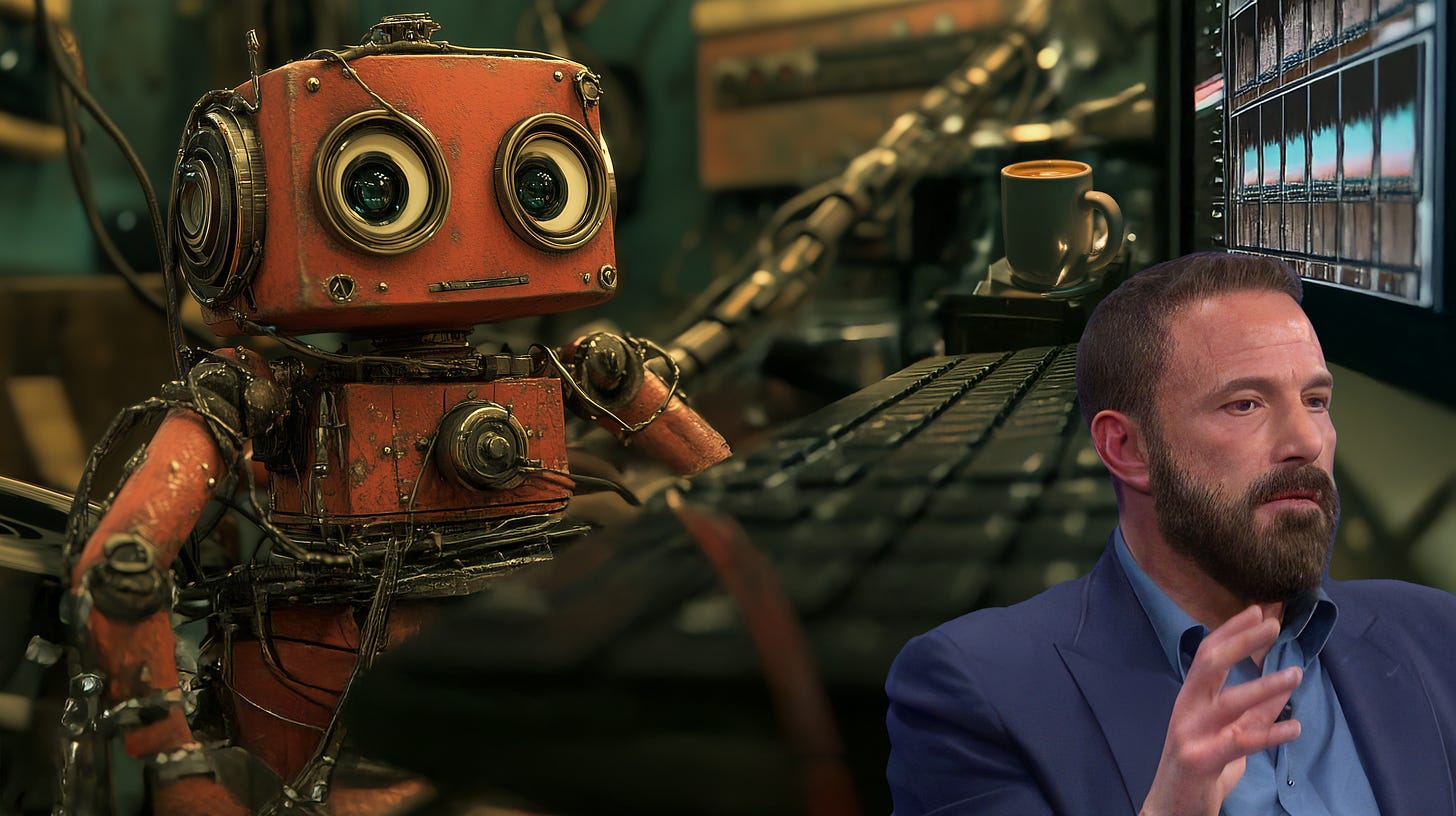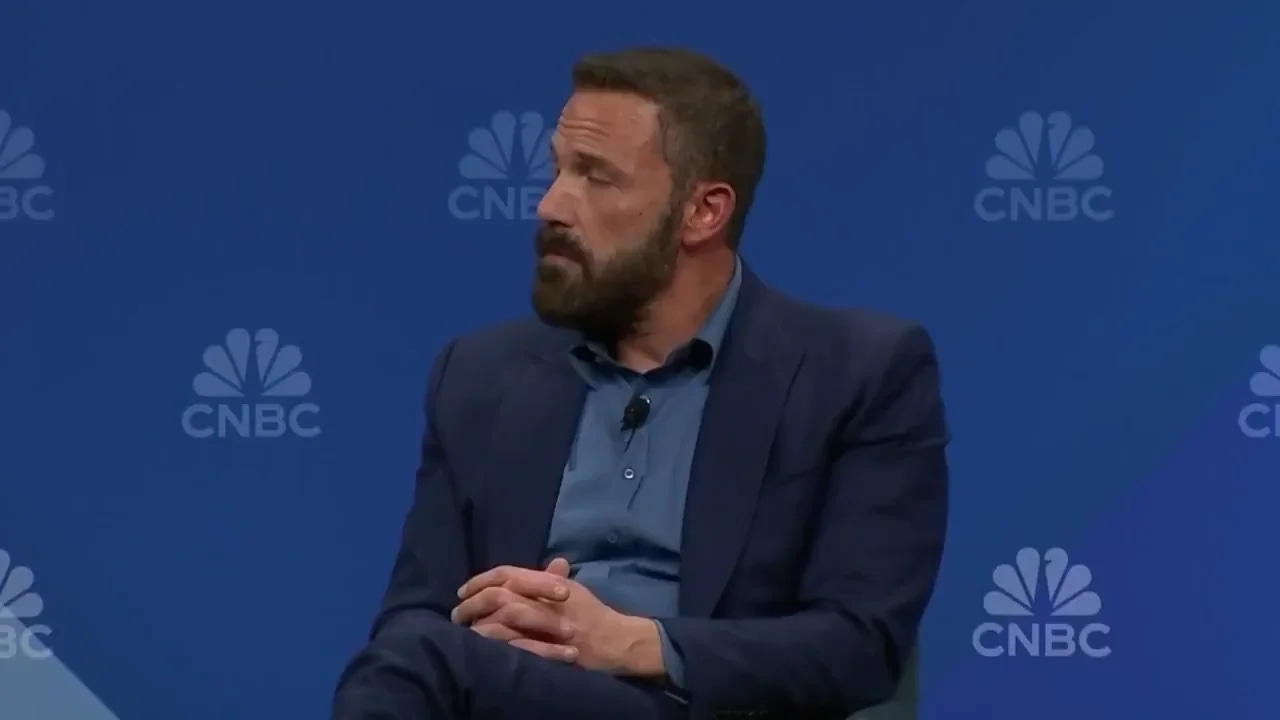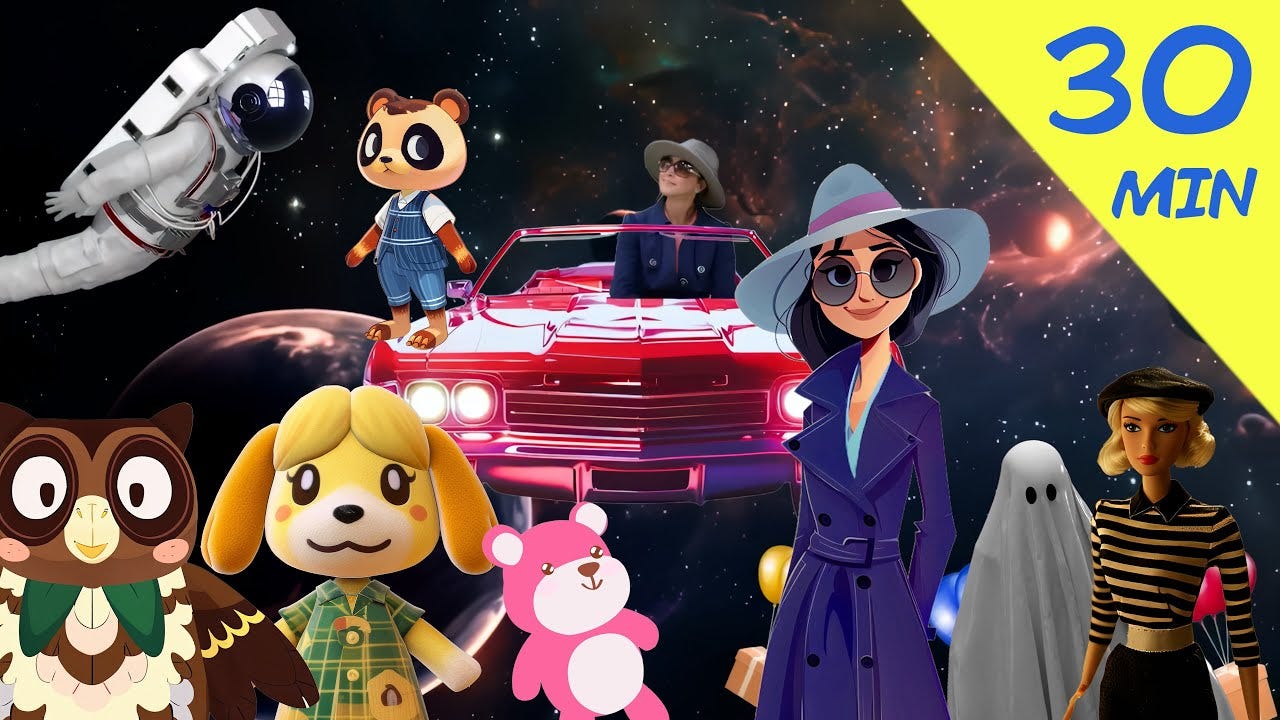As many of you know, I'm a big fan of AI. After spending over two decades producing, directing, and editing professionally in the entertainment industry, it's hard not to be excited about the ways it's reshaping creative work—helping us brainstorm ideas, speed up some tasks, and sometimes even push the boundaries of what we thought was possible.
But with great power comes great marketing hype. Enter Eddie, an AI app claiming to be "ChatGPT for Editing." If you believe its promotional materials, Eddie can take the pain out of video editing, assembling rough cuts so you can focus on "bringing the story to life."
I quickly realized the key phrase here is "rough cut," which Eddie defines as picking the best sound bites from an interview and, in their latest feature, cutting between angles in a multi-camera setup. That's it. According to Eddie, selecting these elements amounts to completing the foundational work of editing.
In their intro video, they boldly state that at this point:
"Now with the rough-cut complete way ahead of schedule, spend more time bringing the story to life—add b-roll, choose the right sequence of shots, time to music."
So, um, actually edit.
The suggestion that things like adding b-roll, sequencing shots, and timing to music are somehow secondary to the "rough cut" was a huge red flag. Editing isn't just about stitching together a few clips; it's about crafting an entire experience.
Multi-Cam Cuts: A Misguided Priority
Let's start with Eddie's new hyped multi-cam editing feature. The idea is that Eddie will automatically select the best angles in a multi-camera shoot, saving you loads of time.
Here's the thing: I’ve worked on a ton of multi-cam shows and videos and actually I’ve never met an editor (me included) that lost sleep over picking angles in a multi-cam sequence. In fact, it's one of the last steps in the process, and neither stressful nor time-consuming. It’s not a big deal at all. For an AI app to make such a thing of it is confusing.
It's like calling an app a "home-building tool" because it helps you pick kitchen cabinet colors. Or claiming to be a "car-building app" because it lets you choose the dice hanging from the rearview mirror. Sure, it's a feature, but it's not that important of a point. Like, how about helping to build the actual car?
But maybe I was being unfair. Multi-cam selection is just the new feature, and Eddie claims to be more than that. So, I decided to put to the test it’s other key feature: selecting the best bites from an interview.
The Real Test: “ChatGPT for Editing”?
For this test, I stripped away the multi-cam aspect entirely and focused on something simple: a single-camera interview. I uploaded a 52-minute clip and asked Eddie to find the best bites.
This should have been its moment to shine. After all, Eddie's marketed as "ChatGPT for Editing," capable of pinpointing the key moments that drive the narrative. I did my best to ignore the fact that in the AI chat it talks to you like a super overly chummy, perhaps secretly condescending, assistant.
I half-expected it to refer to me as “big guy.”
So how did it do at selecting the bites when directed for what kind of piece I was looking to edit? After ten plus attempts and multiple re-prompts, I still didn't get anything close to the best bites from the interview.
Here's what Eddie did: it correctly identified where specific topics were mentioned—"this is where the subject talks about x,” or "here's the part where she discusses this."
But here's what it missed:
• Inflection: Delivery basically - like whether what they’re saying has energy behind it, or comes across in a tone that makes a moment stand out.
• Emotion: The vulnerability or excitement that connects with an audience.
• Nuance: Humor, pauses, gestures—everything that makes a sound bite human.
What Eddie delivered felt flat and lifeless. It picked the what but missed the why. There’s simply an intuitive sense that producers, directors and editors acquire over years and years of experience where they just “know” what makes for a good soundbite. Eddie is back on day one like a new intern that just started.
What Real Editing Is
While we are here, let's be honest: editing is also so rarely about one person talking to a camera – which are apparently the limits of Eddie or any AI “editing” app. Like, what documentary is just a single interview subject sitting there?
Real editing is about weaving together a tapestry of voices, visuals, and emotions. It's about interplay—between interview subjects, music, sound design, archival footage, and more.

Editing isn't linear; it's layered. It's thousands of intricate decisions that have to work together – like a symphony.
AI doesn't grasp any of this. It also doesn't know that sometimes the best sound bite isn't the most informative one but the one where someone's voice cracks, revealing their vulnerability.
Ben Affleck Gets It Right
This brings me to Ben Affleck's recent insights about AI in filmmaking. Here is the clip itself, which I encourage you to watch.
While he’s talking about scripted movies, this comments speak to AI in all aspects of filmmaking, including editing across all genres. Some of my favorite quotes:
"AI might be able to mimic certain aspects of creativity, but it lacks the soul that truly defines great art."
"What AI is going to do is going to dis-intermediate the more laborious, less creative, and more costly aspects of filmmaking, that will allow costs to be brought down, that will lower the barrier to entry, that will allow more voices to be heard."
Most importantly, Affleck clearly understands this crucial distinction: "AI is a craftsman at best...craftsman is knowing how to work. Art is knowing when to stop. And I think knowing when to stop is going to be a very difficult thing for AI to learn, because it's taste."
Where AI Actually Helps
Don't get me wrong—AI has its place in the creative process. I’ve spent the last seven months getting three different certificates in AI Filmmaking, Advertising, as well as Management and Integration. It’s extremely important technology, and it's already revolutionizing parts of filmmaking and storytelling, particularly in these areas:
1. Brainstorming: Need ideas for interview questions, a newsletter title, or fresh approaches to a pitch? AI can jumpstart the process and get the creative juices flowing.
2. Creating Visual Assets: Tools like MidJourney produce stunning (and sometimes humorous) images that add flair to blogs, newsletters, and presentations. Need a surreal backdrop for your YouTube channel starring a female super sleuth? AI's got you.
3. Refining Visual Assets: I’m surprised more people aren’t talking about the revolution that Adobe’s generative fill is in Photoshop, as well as the ability of apps like Topaz AI to uprez and recover poor quality archival materials. Both are way more relevant and useful at the moment than generative AI’s ability to create uber cool sci-fi trailers for movies that don’t actually exist.
4. Streamlining Workflows: New supercharged features in Adobe Premiere like Lumetri Color, and Essential Sound have gone next level, and Runway is on the verge of not only letting us all do monologues as dogs but making green screens and drones unnecessary.
And, of course, ElevenLabs has already put most voiceover artists out of work.
But these aren't art—they're new tools for artists to use.
The Soul of Editing
At the end of the day, editing is about taste, and a million small decisions that machines simply can't make. AI might be able to help pick multi-cam angles or isolate keywords, but it can't replicate the nuanced creativity that happens when an editor brings a story to life.
Returning to Afflack’s wisdom: "AI can write you excellent imitative verse that sounds Elizabethan. It cannot write you Shakespeare."
And even if AI could hypothetically stumble upon to writing Shakespeare (like a monkey could if given enough time), it would take a human to recognize that it's Shakespeare. AI doesn't understand greatness; it only mimics patterns.
So, is Eddie the future of editing? Only if your idea of editing is choosing dice for the rearview mirror. The rest of us will be here, making the tough calls, weaving the threads, building the whole damn car. (And loving the messy, difficult process along the way!)













